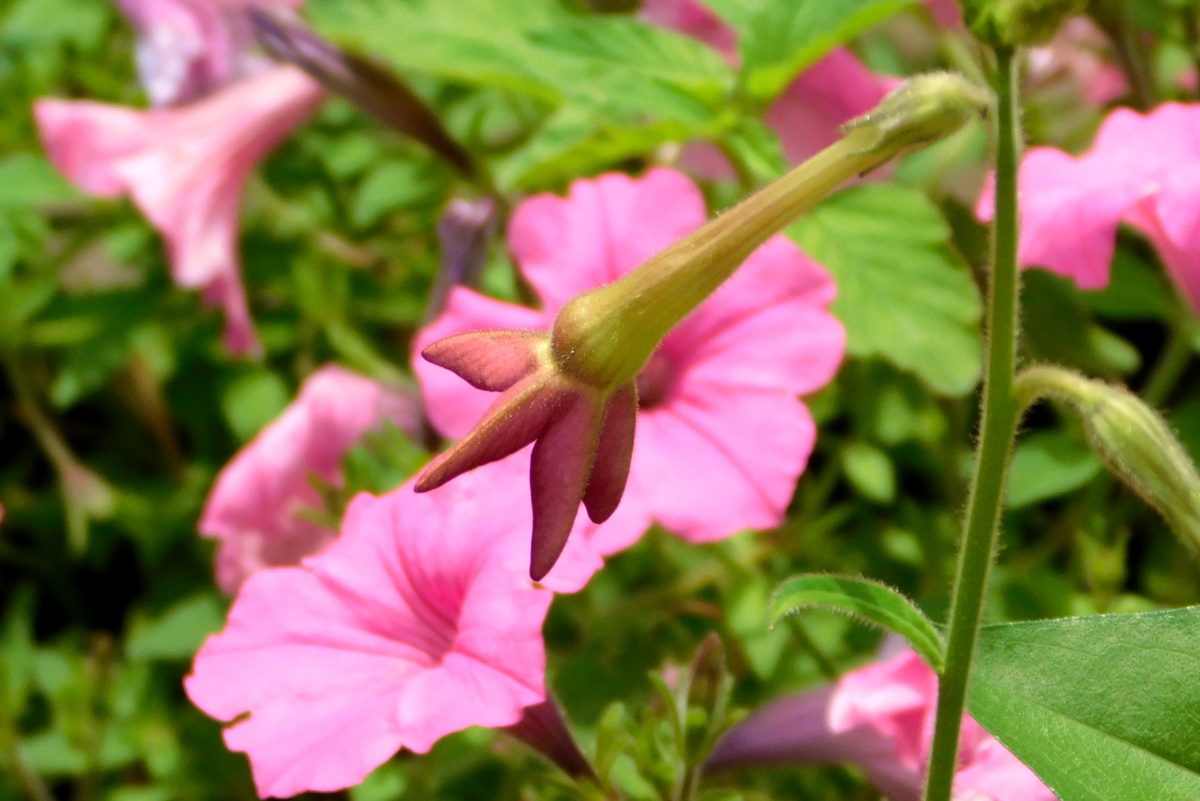It is a sweet surprise when weeds add garden charm. I don’t always leave them, but many times, I do.
There are quite a few that are return visitors from prior years, due to self-sowing. Others are settlers coming from nearby pastures and fence rows. That makes them free plants, depending on how I want to look at them.
It has been said that a weed is just a plant growing where you don’t want it. Since my winter sowing experiment was a major fail this spring, I’m very happy to have some friendly volunteers to fill the gaps.
Sweet Pea
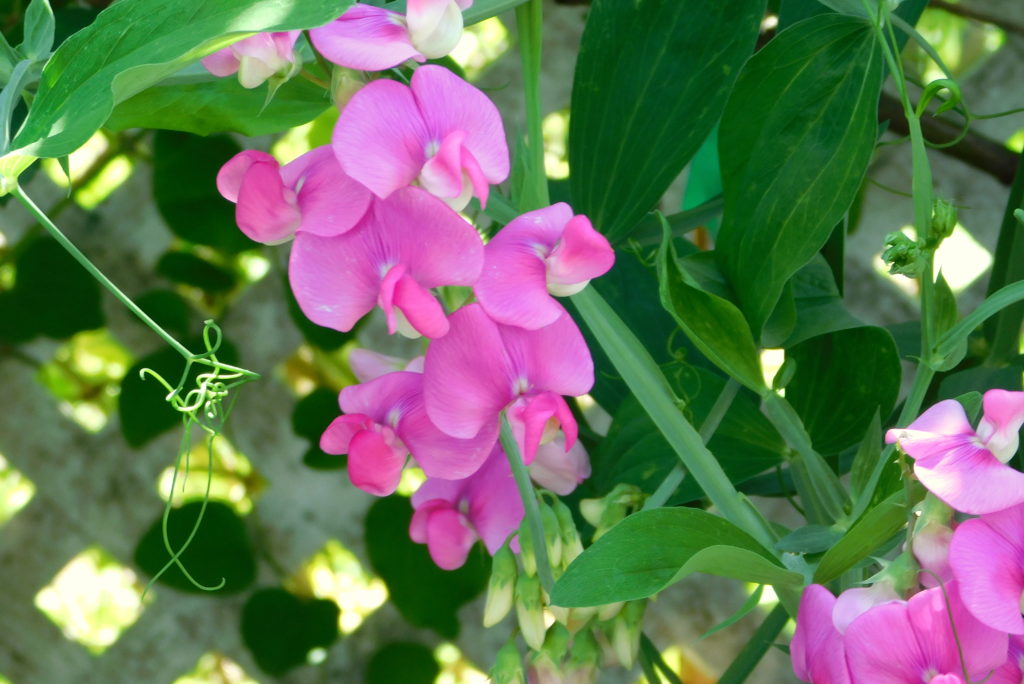
I’ve been looking for this perennial from the past couple of years, and they are faithful guests. They have also been spreading by seed.
The critters don’t like to eat them, unlike the fragrant store-bought hybrids. They have sturdy stems, grow profusely, and provide lots of pink blossoms all through the season. Pollinators appreciate them, too.
Right now, the biggest group is in competition for Queen of the Trellis with some Autumn Beauty clematis, also a wild type, which will be covered in white clusters in the fall. It’s hard to tell which is going to win. It might end in a tie.
Flowering Tobacco (Nicotiana)
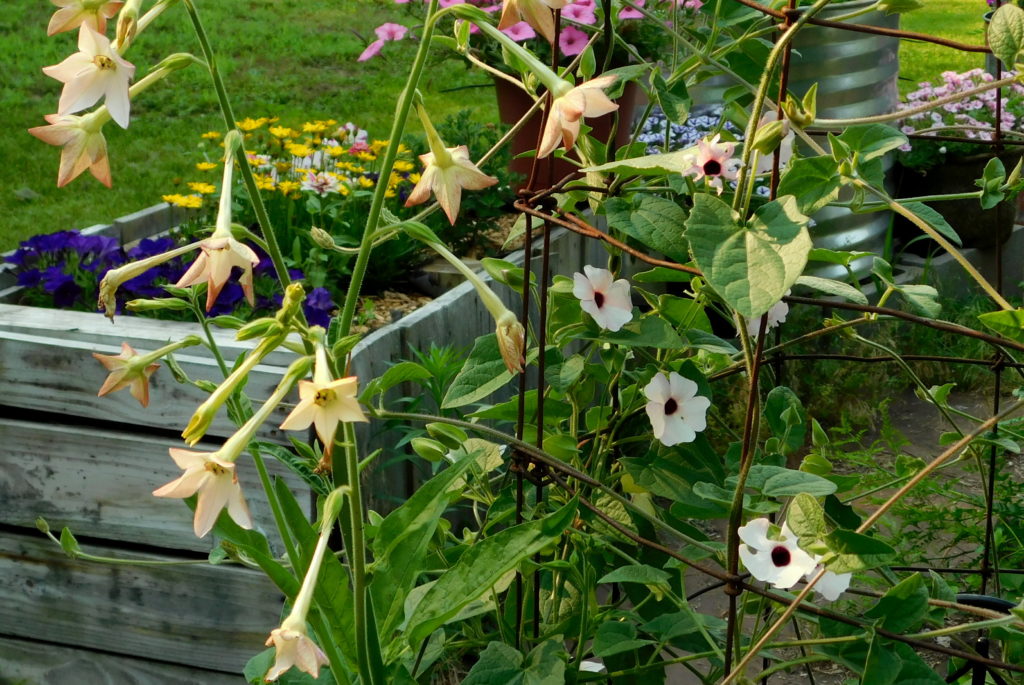
I grew these from seed a few years ago and this year, because I have been behind, I get to enjoy some returning plants, growing near the original location.
I have a tall one next to a large pot of Black-eyed Susan Vine (thunbergia) and another smaller one in a container with some zinnias and petunias.
The little trumpets are a pleasing contrast to the round blooms of their companions.
Spider Flower (Cleome)

It’s been years since I bought this old-fashioned favorite. Part of their appeal comes from happy memories. They self-sow profusely, to the point where I put them on my “control” list for this year.
I’ll probably pull a lot of them out as soon as they start to fade, only leaving the best rosy colors. I love them, but you can have too much of a good thing.
Celosia “Asian Garden”
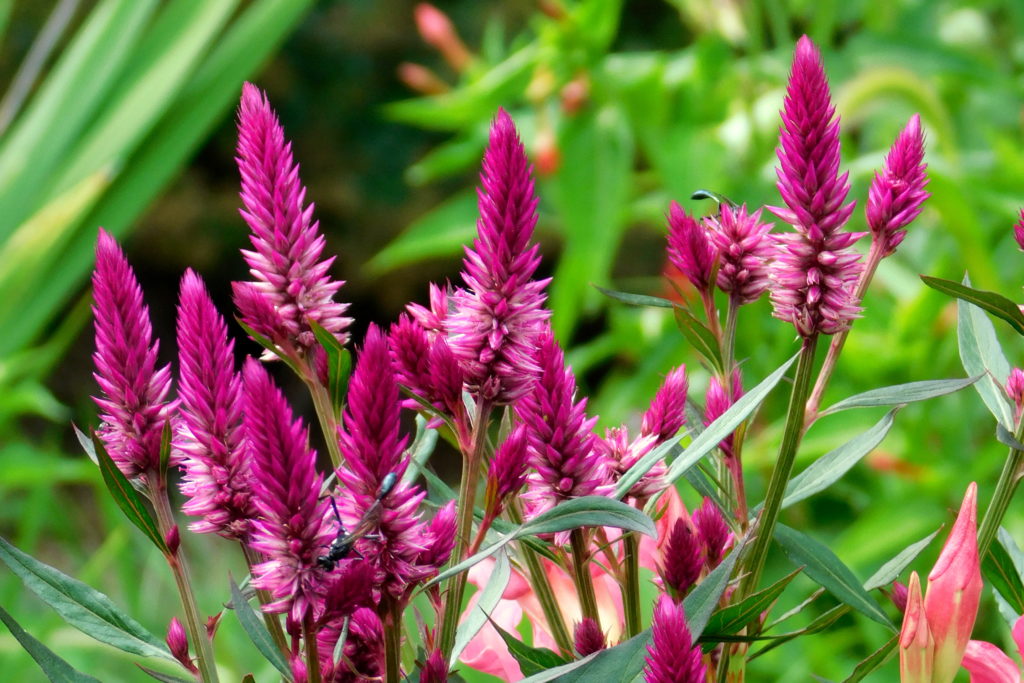
I found these in 4-packs at a greenhouse several years ago, and I’ve been delighted every year since. They come back easily on their own from seed. They have even returned to a bed where I had covered the soil with two inches of compost and dug it over twice.
I like these because they are different than the other plume and cockscomb types. They can be transplanted if you get it done early while they are small. Otherwise, they won’t like moving because they grow a long taproot.
I have some seeds saved in case I want to expand their territory another year.
Black-eyed Susan (Rudbeckia)
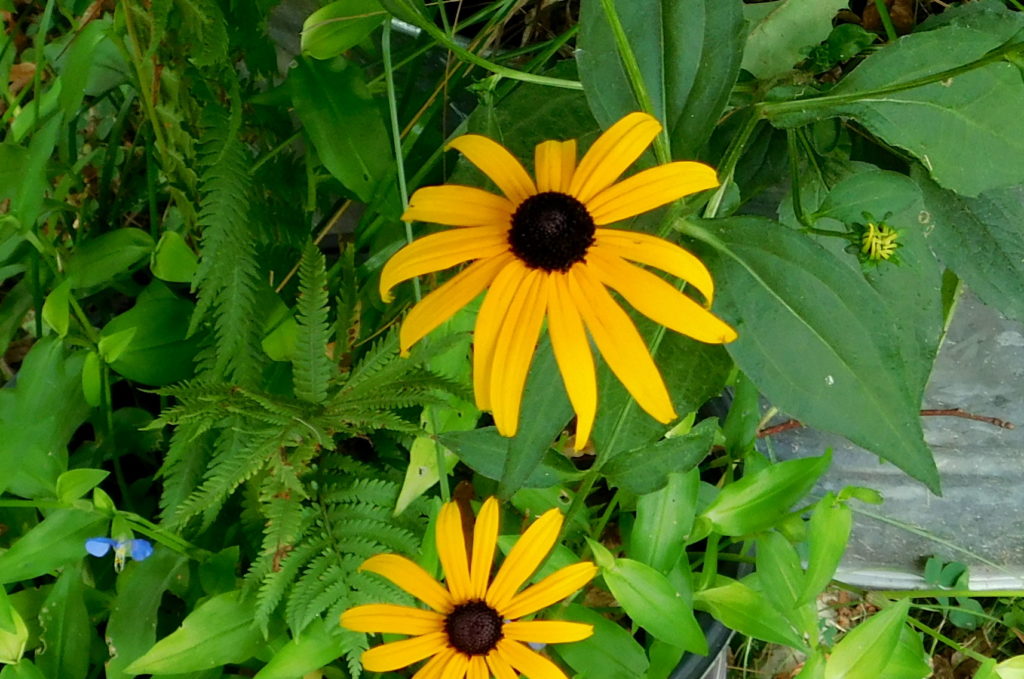
This is another example of tardy weeding leading to a pretty surprise. I have not generally liked the wild versions, because they look too gangly compared to their tame cousins.
This one came up in a tub of ferns in a spot that is too shady for them. The flowers are a rich yellow-orange, a bright spot in a sea of green.
I’ll put in a marker and add it to my task list so I remember to move it in the spring. That gives me time to find it a better home.
So, why do I leave the weeds, sometimes? It depends. I am thankful this year for all the unexpected visitors. They are adding a lot of variety to my garden without a lot of fuss.

